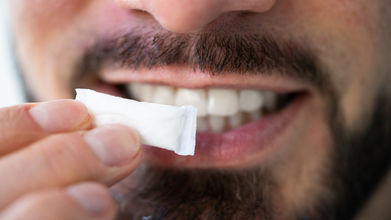- Health Conditions A-Z
- Health & Wellness
- Nutrition
- Fitness
- Health News
- Ayurveda
- Videos
- Medicine A-Z
- Parenting
Your ‘Normal’ Exhaustion Might Be A Cancer Red Flag, Oncologist Shares Why More Young Adults Are Getting Diagnosed

Credits: Health and me
For years, cancer has largely been seen as a disease of aging. But that narrative is shifting, and not in a good way. More young adults—some as young as 29 or 30—are walking into oncology clinics with advanced-stage cancers that could have been caught earlier if only they had paid attention to what seemed like everyday fatigue, body aches, or stress.
According to recent data, early-onset cancers—those diagnosed between ages 18 and 49—are on the rise in the United States. A new analysis points to increasing rates of 14 different cancers in this age group, most notably breast, colorectal, kidney, and uterine cancers.
Dr. Ang Peng Tiam, Medical Director and Senior Consultant Medical Oncology at Parkway Cancer Centre, Singapore, sees this trend up close. “Younger patients often delay medical attention because they simply don’t believe cancer could happen to them,” he says. “By the time they come in, many are already at stage 4.”
When Everyday Symptoms Mask Something Serious
The symptoms are easy to dismiss. Body aches, shoulder pain, stomach discomfort, fatigue—all easily chalked up to stress, overwork, or a sedentary lifestyle.
Dr. Ang recalls a recent patient, a 35-year-old man, who first experienced shoulder pain, then some discomfort in his abdomen. Painkillers seemed to help initially, so he didn’t investigate further. When he finally did, scans revealed his liver was full of tumors. The primary cancer was in the colon and it had already spread.
“This disbelief that someone so young could have cancer is what causes delays in diagnosis,” Dr. Ang explains.
Why Are More Young Adults Getting Cancer?
The short answer, it’s complicated. Experts agree the rise in early-onset cancer isn’t due to a single cause. It's a mix of genetics, lifestyle, environment, and healthcare gaps. Some cancers have known hereditary components, like BRCA mutations in breast and ovarian cancer. Others, like colorectal cancer, are increasingly being linked to lifestyle factors like diet, alcohol, and sedentary behavior.
Screenings aren’t routinely offered to younger adults. Mammograms typically start at 40; colonoscopies at 45. If you’re under that age and asymptomatic, you're likely not getting checked. Busy schedules, lack of insurance and the assumption that "I'm too young" to have cancer create a dangerous combination. Delays in seeking care mean many are only diagnosed when the disease has progressed.
To be clear, early-onset cancers are still relatively rare in the grand scheme of things but the pattern is significant enough to raise alarm bells. Dr. Ang clarifies, “It’s not an epidemic yet, but yes, we are seeing more young patients being diagnosed. Thankfully, they are often fit and can handle intensive treatments.”
The good news is that treatment protocols don’t differ drastically for younger patients, and their overall fitness may allow them to recover better and tolerate stronger therapies.
How Age Affects Cancer Risk?
Age is still the top risk factor for most cancers, the average age for a cancer diagnosis is 66 but some cancers skew younger. According to the American Society of Clinical Oncology and the National Cancer Institute:
- Half of testicular cancer diagnoses occur in men aged 20-34.
- More than half of acute lymphocytic leukemia (ALL) cases occur in those under 20.
- Hodgkin lymphoma most often strikes people under 39.
- One in four bone cancer diagnoses happen in children and teens.
These statistics show that while cancer is still more common with age, several types disproportionately affect younger people. So what should young adults take away from this growing trend?
Don’t ignore persistent symptoms like chronic fatigue, unexplained weight loss, changes in bowel habits, or lingering pain should never be brushed off. These seemingly minor issues can sometimes signal something more serious.
Knowing your family history is also crucial. If cancer runs in your family, speak with your doctor about whether early screening is right for you. Don’t be afraid to push for answers. If something feels off, trust your instincts and don’t settle for vague explanations, seek second or even third opinions if necessary.
Your lifestyle plays a big role too. Maintaining a balanced diet, exercising regularly, and avoiding smoking and excessive alcohol are simple yet powerful ways to reduce your cancer risk. Lastly, make regular check-ups a priority. Even if you feel fine, annual physicals can help flag early warning signs before they become something bigger. Your primary care doctor is your first line of defense in staying ahead of serious illness.
Cancer in your 30s or 40s still feels unthinkable to many, and that mindset is part of the problem. As Dr. Ang warns, “You cannot imagine symptoms like a little fatigue or shoulder pain could mean cancer. But sometimes, they do.”
You don’t need to panic at every minor ache. But staying informed, being body-aware, and not dismissing unusual changes can make all the difference. Because when it comes to cancer, catching it early still offers the best shot at a cure.
Is Delhi's Toxic Air Making Your Period Cramps More Painful? Here's What Study Says

Credits: iStock
Air quality in Delhi remains toxic, despite the GRAP !V measures implemented in the national capital. Today, Delhi recorded an AQI of 358, this remains under 'very poor'. As per the Central Pollution Control Board (CPCB), the AQI was recorded at 442 in Ghazipur, 409 in ITO, and 447 in Palam, all under 'severe' category.
While we have long known that pollution impacts lung and respiratory health, but it can impact beyond that, including causing severe menstrual cramps.
What Proves That Air Pollution Impacts Menstrual Cramps?
A study published in Frontiers in Public Health, explored the data of 2,96,078 women and girls between the age of 16 to 55 years in Taiwan and correlated it with the long-term air pollution data between 2000 and 2013. None of these women had any history of dysmenorrhea before the survey had began. Dysmenorrhea is a common gynaecological condition that impacts 16 to 91% of people in their reproductive age. The signs and symptoms include painful and severe periods that are results of hormonal imbalances.
The results showed that during the 13 years, 4.2% women and girls were diagnosed with dysmenorrhea for the first time. The study concluded that risk of developing dysmenorrhea was up to 33 times higher among women and girls who lived in areas with the highest levels of air pollutants.
Professor Hsu, who conducted the study said, "Our results demonstrate the major impact of the quality of air on human health in general, here specifically on the risk of dysmenorrhea in women and girls."
The pollutants in questions are nitrogen oxide, nitric oxide, nitrogen dioxide, carbon monoxide, and particle smaller than 2.5 µm in diameter (PM2.5).
How Air Pollution Shapes Menstrual Health - Its Impact
The public health impact of air pollution is more layered and gendered than it often appears. Over the years, a growing body of research has begun to link polluted air with menstrual health problems. A 2018 study found that teenage girls exposed to higher air pollution were more likely to experience irregular periods and took longer to develop regular cycles during adolescence and early adulthood. Other studies have connected air pollution with longer menstrual cycles, increased stress, reproductive health issues, and even changes observed during lockdown periods. Conditions such as infertility, metabolic syndrome, and polycystic ovary syndrome have also been associated with prolonged exposure to polluted air.
These findings challenge the idea that menstrual health is purely biological. Instead, it is deeply influenced by social and environmental conditions, including income levels and where a person lives. In the present study, researchers observed that younger women, women from lower-income backgrounds, and those living in highly urbanised areas faced a higher risk of developing dysmenorrhea or painful periods. Among all factors studied, long-term exposure to high levels of PM2.5 emerged as the strongest contributor. PM2.5 refers to fine, inhalable particles commonly found in polluted air that can penetrate deep into the body.
The concern becomes sharper in the Indian context. In 2019, India recorded the highest PM2.5 levels globally. The study highlights clear differences in menstrual experiences between women and girls living in urban versus rural areas. Those in low-income and densely populated urban regions, where exposure to air pollution is often highest, showed a significantly greater risk of dysmenorrhea.
This health burden is further compounded by period poverty, which continues to affect large sections of rural India and many other countries. Limited access to sanitary products, lack of awareness, and social stigma mean that many girls and women already miss school and work during their periods. Increased menstrual pain linked to environmental factors like air pollution only deepens these challenges.
A 2017 study underlined the importance of identifying environmental influences on the menstrual cycle from a public health perspective, noting potential long-term consequences such as infertility, reproductive cancers, osteoporosis, and metabolic disorders.
Could Bird Flu Become The Next Pandemic For Humans?

Credits: iStock
Bird flu viruses have been present for long, and what was earlier understood as a virus just limited to avian, could now affect humans too. Bird flu viruses could have a potential risk for humans and may become next pandemic. This comes from two different studies, one done by the universities of Cambridge and Glasgow that show how avian flu strains are multiplying even when the body temperatures could hinder viruses. Whereas, another important study led by Indian scientists, by Philip Cherian and Gautam Menon of Ashoka University, published in BMC Public Health predict if H5N1 or the bird flu virus, could start spreading among humans. How quickly must we act to stop it?
How Was The Study Conducted?
Using BharatSim, an open-source simulation platform originally developed during Covid-19, the researchers recreated what an outbreak might look like in real life. “The threat of an H5N1 pandemic in humans is a genuine one,” Prof Menon said, “but we can hope to forestall it through better surveillance and a more nimble public-health response.”
Their model begins where experts believe a real outbreak would: with a single human infection, most likely a poultry worker or someone exposed to infected birds at a farm or market. The danger, the researchers argue, lies not in that first case, but in whether sustained human-to-human transmission takes hold.
The Cambridge and Glasgow study also provides that the viruses generally replicates most effectively in the upper respiratory tract, where temperatures are around 33 °C. They replicate less efficiently deeper in the lungs, where temperatures rise to about 37 °C. However, avian flu thrives in hotter environments, which can read up to 40 to 42 °C.
Why Does Timing Matter More Than Anything Else?
The study by Ashoka University has the most sobering findings in how fast control can slip away. According to the simulations, once cases rise beyond roughly two to ten people, the virus is likely to move beyond immediate contacts and into the wider community.
If households of close contacts are quarantined when just two cases are detected, the outbreak can almost certainly be contained. By the time ten cases are identified, however, the model suggests the infection has probably already spread far enough that early interventions no longer make a meaningful difference.
To ground their work in reality, the researchers focused on a village in Tamil Nadu’s Namakkal district, one of India’s largest poultry hubs. With more than 1,600 farms, around 70 million chickens and tens of millions of eggs produced daily, the region reflects the kind of dense human-animal interaction where spillovers are most likely.
In the simulation, the virus spreads outward from a single workplace into homes, schools and markets, tracking primary and secondary contacts. Once “tertiary” infections, contacts of contacts, appear, control becomes dramatically harder without severe measures such as lockdowns.
What Works And What Does Not Work
Culling birds work, but only if it happens before humans are infected. Once the spillover is done, isolating patients and quarantining is the only option that can stop the virus, that too if done very early. Targeted vaccination could help raise the threshold at which the virus can sustain itself. Quarantine imposed too early keeps families together longer, increasing household transmission. Imposed too late, it barely slows the outbreak at all.
Why Is It Important To Understand How Avian Flu Works?
Avian flu, bird flu or the H5N1 is not new. It first appeared in humans in China in the late 1990s and has since become entrenched across South and South-East Asia. Most of the time, it remains a disease of birds. But every so often, it spills over.
Between 2003 and August 2025, the World Health Organization recorded 990 human infections across 25 countries. Nearly half of those infected died, a fatality rate of around 48%. The numbers are small, but the severity is striking.
In recent years, the virus has shown an unsettling ability to cross species barriers. In the United States, H5N1 has affected more than 180 million birds, spread to over 1,000 dairy herds across 18 states, and infected at least 70 people, most of them farmworkers. In India, the virus killed three tigers and a leopard at a wildlife rescue centre in Nagpur earlier this year, a reminder that mammals are increasingly getting caught in its path.
Fact Check: Are Nicotine Pouches Safer Than Smoking?

Credit: iStock
Nicotine pouches have become popular in the UK, show many studies, this is especially true in the case of young adults.
In fact, a new study done by the researches from University College London (UCL) has found that in the last five years, there has been an increase from 0.1 per cent to 1 per cent of adults using nicotine pouches. This means, around 522,000 more people in the UK have started using the pouches.
How Does A Nicotine Pouch Work?
The pouches are placed between the lip and gum and it releases nicotine slowly. The pouches are also available in variety of flavors, with sweeteners and plant-based fibers. It does not contain tobacco like vapes do and usually are considered to be a healthier alternative to smoking.
Health and Me ran a fact check on whether it truly is safer than smoking, and here is what we found.
Are Nicotine Pouches Safer Than Smoking?
"This risks are substantially less than some other nicotine products like smoking, because there is no tobacco and there is no combustion," said Dr Harry Tattan-Birch, the lead author of the study, to Mornings with Ridge and Frost.
"And we know the combustion of tobacco is the thing that causes most of the diseases related to smoking," he says.
However, he and his team has warned that while it may not cause serious illness like tobacco can, young people could have a negative impact in their lungs and brains, as they are still in developing stage. This makes them more sensitive to the effects of nicotine, and it could become difficult to stop using it.
A UCL research fellow earlier told Sky News that while nicotine pouches are far less harmful than smoking, their long-term effects remain unclear because they are relatively new. Drawing on what is known about their contents, she noted they are not risk-free, as users are still exposed to some toxic substances, albeit at much lower levels.
Who Are Using These Nicotine Pouches?
Researchers from UCL, supported by Cancer Research UK, analysed survey responses from 127,793 people aged 16 and above across England, Scotland and Wales, collected between October 2020 and March 2025.
Their analysis showed that nicotine pouch use among 16 to 24-year-olds rose to 4% in 2025, up from just 0.7% in 2022. The increase was most pronounced among young men, with one in 13 men in this age group, or 7.5%, reporting use.
Overall, men accounted for 72% of nicotine pouch users between 2022 and 2025, while 47% were under the age of 25. Dr Tattan-Birch said the growth in use has been driven almost entirely by young people, particularly young men, with usage among adults over 35 remaining low and largely unchanged.
He added that this trend also includes children. Since nicotine pouches are not classified as tobacco or vape products, there are currently no age limits. Advertising is also unrestricted, allowing brightly coloured, sweet-flavoured products to appeal to younger audiences.
Do Nicotine Pouches Help Quit Smoking?
The research found that 69 per cent of pouch users were reported using other nicotine products, while 56 per cent of them smoked, as per the survey from January 2022 to March 2025.
1 in 6, which makes it 16 per cent said they never regularly smoked. "Whether nicotine pouches are good or bad for public health depends on who is using them. If it's a young person who would otherwise start smoking, then the use of pouches might help to reduce harm. However, if it's a person who otherwise would not use nicotine at all, then the potential for harm increases," said Tattan-Birch.
© 2024 Bennett, Coleman & Company Limited

